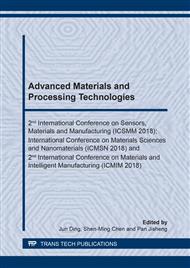p.137
p.145
p.151
p.159
p.167
p.175
p.181
p.189
p.194
Increasing the Hole Expansion Ability of High Strength Steel Sheet by Improving the Pre-Hole Shearing Process
Abstract:
The hole expansion process is a forming process that the fracture easily occurred on the hole edge. Therefore, many research papers presented various processes to make a precision pre-hole shearing to a hole expansion process such as wire cut, EDM, and laser cut. The purpose of this work is to increase a hole expansion ratio on the high strength steel sheet. The conventional piercing by piercing punch and piercing with a counter punch was used to make a pre-hole shearing process in this research paper. The high strength steel grade 590 and 980 MPa of 1.2 mm of thickness were used in the experiments. From experimental results, it was found that the pre-hole shearing by piercing with a counter punch can be increased a shear surface on cutting edge of workpiece. Moreover, the used piercing with counter punch can improve the hole expansion ratio more than the conventional piercing process because sheared surface around the hole edge was increased.
Info:
Periodical:
Pages:
167-174
Citation:
Online since:
July 2019
Authors:
Price:
Сopyright:
© 2019 Trans Tech Publications Ltd. All Rights Reserved
Share:
Citation:


